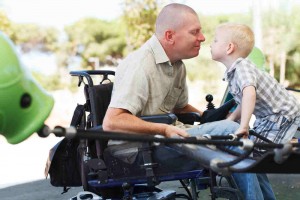Gene Mutations Still a Factor in ALS Patients Without Family History

 According to a July 2014 report in the Morbidity and Mortality Weekly Report (MMWR), amytrophic lateral sclerosis (ALS) or Lou Gehrig’s disease is estimated to affect about 3.9 individuals for every 100,000 Americans, most commonly diagnosed in the elderly who are in their 70s. While the cause of this progressive and fatal neuromuscular disease has yet to be fully understood, experts believe a familial form of ALS comprises about 5%-10% of all cases.
According to a July 2014 report in the Morbidity and Mortality Weekly Report (MMWR), amytrophic lateral sclerosis (ALS) or Lou Gehrig’s disease is estimated to affect about 3.9 individuals for every 100,000 Americans, most commonly diagnosed in the elderly who are in their 70s. While the cause of this progressive and fatal neuromuscular disease has yet to be fully understood, experts believe a familial form of ALS comprises about 5%-10% of all cases.
A recently completed study from the Washington University School of Medicine in St. Louis and Cedars-Sinai Medical Center in Los Angeles is suggesting the remaining 90%-95% of ALS patients deemed to have a sporadic form of the disease, in that they do not have a family history of ALS, may actually be carrying with them genetic mutations that trigger and drive ALS, and that these cases occur more often than we think. They also discovered the number of gene aberrations one bears can determine the age of disease onset. A report of this study is available online in the Annals of Neurology.
Co-authors Dr. Matthew Harms, an assistant professor of neurology at Washington University, Robert Baloh, MD, PhD, associate professor of neurology at Cedars-Sinai Medical Center, and their team of scientists are suggesting patients with sporadic ALS, carrying mutations in one or more of the 30 genes associated with ALS, are not as rare as experts believe. Dr. Harms explained, they found 26% of sporadic ALS cases had these mutations.
Data was obtained through a sequencing technique at Washington University, which allowed the scientists to examine 17 genes linked to ALS, sampled from the DNA of 391 ALS patients, with 90% not having family history of the disease. While the researchers still do not know for certain if these ALS patients are the first in their families to have the disease, or other members of their family carry the mutations without developing the disease, but Dr. Harms believes the known genes linked to ALS may not be characteristic triggers.
”It’s also possible that these mutations could be combining with environmental factors linked to ALS,” said Dr. Baloh. ”Those factors might coincide in an individual family member and cause disease, while other family members who have the mutation but not the environmental exposures remain unaffected.”
Additionally, the researchers found that multiple genetic mutations can hasten disease onset to as soon as 51 years old, compared to patients found to have only one mutation, who on average begins showing symptoms at age 61.






